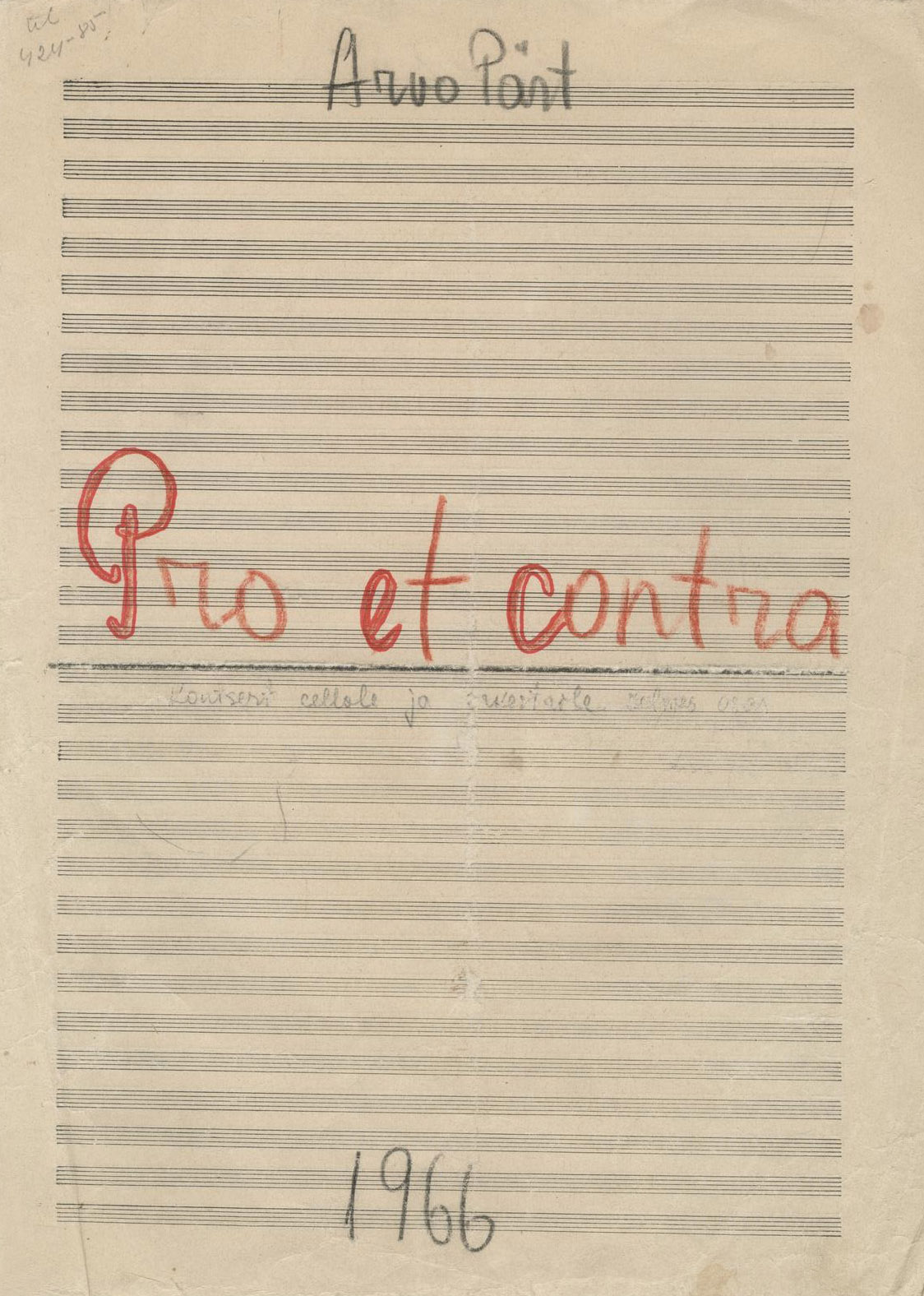The cello concerto Pro et contra is one of Pärt’s collage pieces from the 1960s which are a remarkable development line in his early work. For Arvo Pärt, his collage works – Collage über B-A-C-H (1964), cello concerto Pro et contra (1966), Symphony No. 2 (1966) and Credo (1968) – are a bridge between his early and later works. Arvo Pärt: “One can see collages as a mixture of positive and negative, true and false. These are a sort of transplantation: if you have the feeling that you don’t have a skin of your own, you try to take strips of skin from all around you and apply them to yourself. In time these strips change, and turn into a new skin.” (Enzo Restagno, Arvo Pärt in Conversation, 2012, p. 17). “It could be that tintinnabuli on…
The cello concerto Pro et contra is one of Pärt’s collage pieces from the 1960s which are a remarkable development line in his early work. For Arvo Pärt, his collage works – Collage über B-A-C-H (1964), cello concerto Pro et contra (1966), Symphony No. 2 (1966) and Credo (1968) – are a bridge between his early and later works. Arvo Pärt: “One can see collages as a mixture of positive and negative, true and false. These are a sort of transplantation: if you have the feeling that you don’t have a skin of your own, you try to take strips of skin from all around you and apply them to yourself. In time these strips change, and turn into a new skin.” (Enzo Restagno, Arvo Pärt in Conversation, 2012, p. 17). “It could be that tintinnabuli only emerged in me thanks to these collages,” the composer has said.
All Pärt’s collages include musical references from earlier periods, but each in a different way. The cello concerto Pro et contra (1966), composed at the same year as Symphony No. 2, is different from Pärt’s other collage pieces in that the composer has not quoted a specific composition, but uses Baroque musical “style” as a collage element. It is also a dodecaphonic piece with the elements of Neoclassicism and sonoristic music, such as various sound effects, clusters and unconventional instrumental techniques.
Characteristic of a solo concerto, the composition consists of three movements. The opposites, as revealed by title Pro et contra (Latin for “for and against”), are brought to listener’s attention right at the beginning of the first movement (Maestoso). It begins with a majestic opening chord in D major, followed, after a short pause, by a cluster of 12 notes of the chromatic scale. In the cadenza, rather than demonstrating the traditional sound possibilities of the solo instrument, the cello is mainly used as a percussion instrument. However, this is not a free improvisation, but instead, a solo part with precise performance instructions and notation. The body of the instrument is divided into numbered zones, and each knock is generated in a precise location and manner. The slow second movement (Largo) consists of a four-bar Baroque-like cadenza in D minor, which feels like a short transition to the next movement. The third movement (Allegro) differs from the first two by its motoric pulse that runs through the entire movement. The composition ends with a festive cadenza characteristic of Baroque music.
Pro et contra was composed at the initiative of the Russian cellist Mstislav Rostropovich and is also dedicated to him, although the work was premiered on 3 November 1967 at the Estonia Concert Hall by Toomas Velmet with the Symphony Orchestra of the Estonian Radio and Television (presently the Estonian National Symphony Orchestra) conducted by Neeme Järvi. Estonian audiences heard Rostropovich’s performance a few months later, in February 1968.
